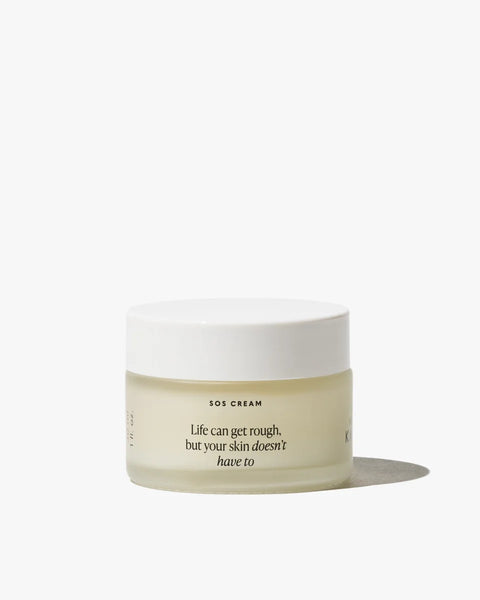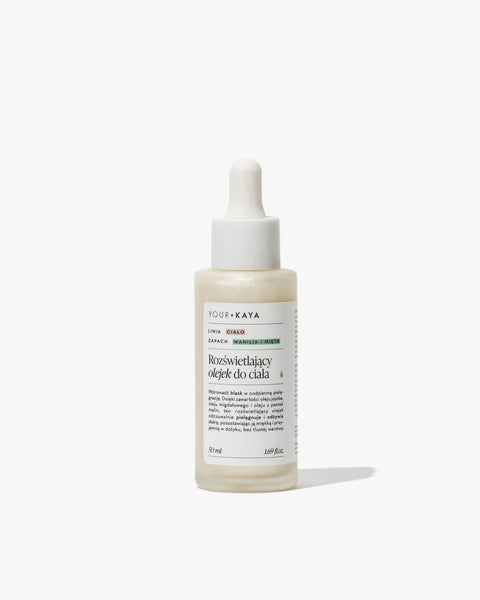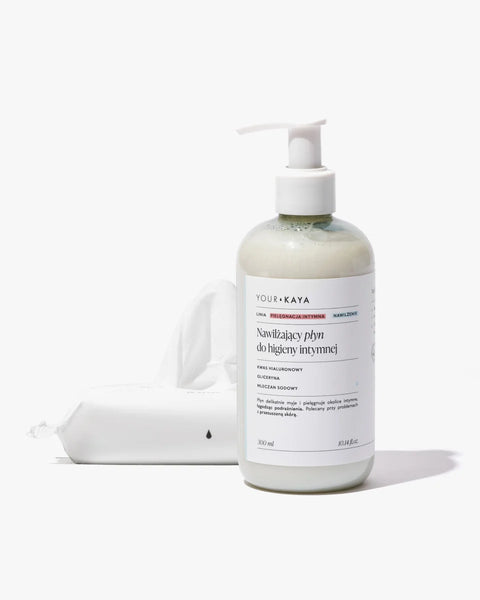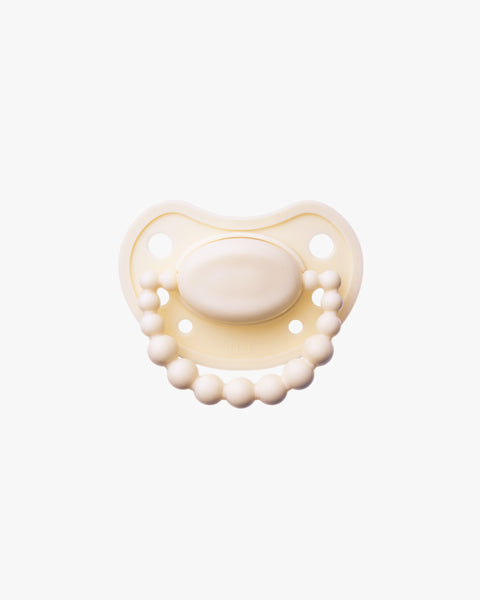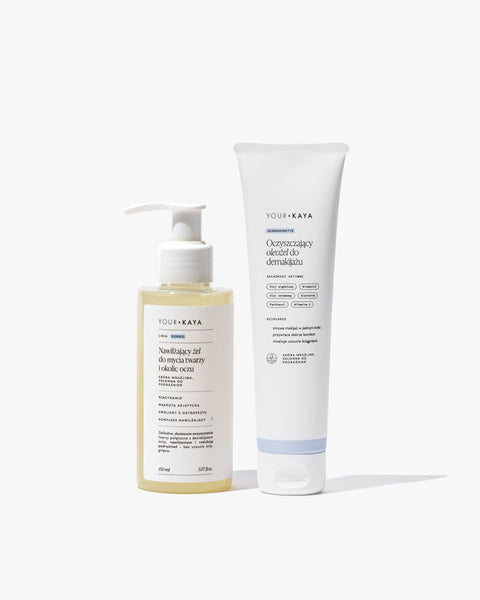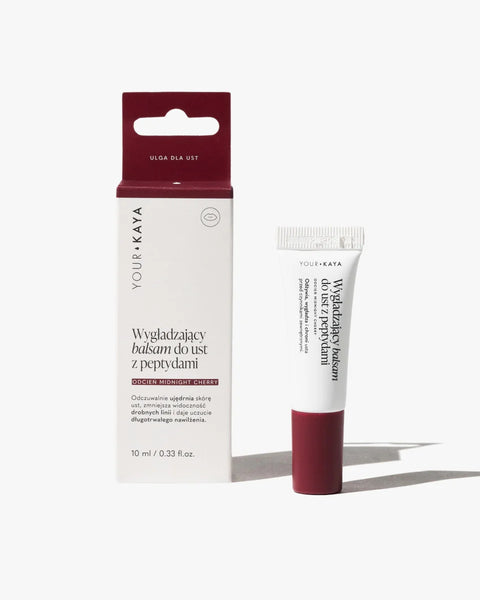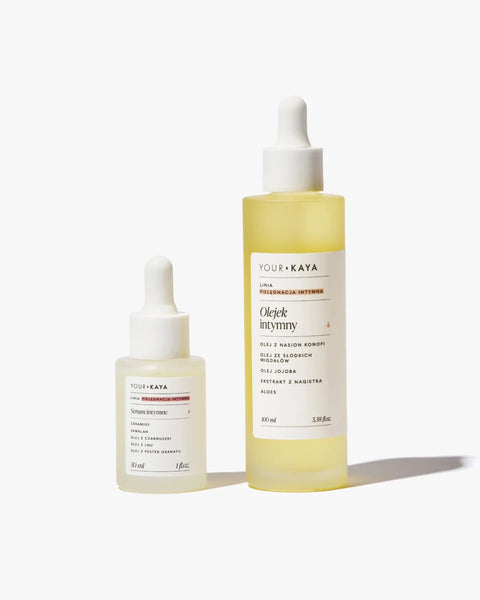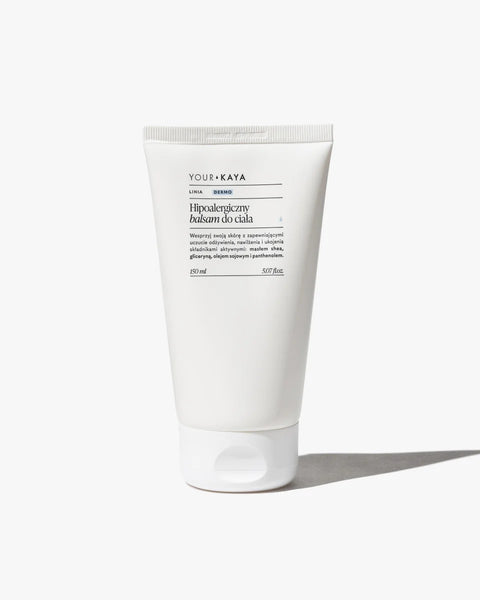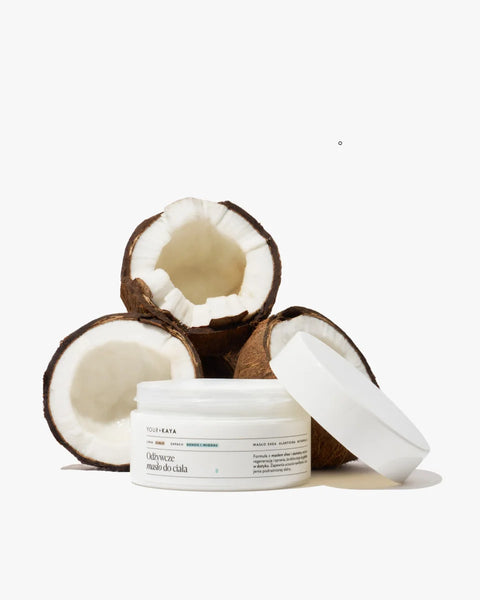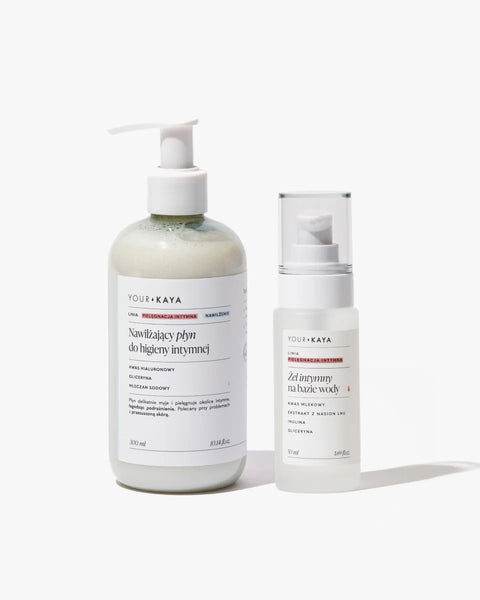What is vaginal yeast infection?
Vaginal candidiasis is a fungal infection of the intimate areas. It is estimated that 75% of people with vaginas experience vaginal candidiasis at least once in their lives, and at least half of them experience recurrence. Vaginal candidiasis is one of the most common gynecological infections.

Candida albicans – we have the culprit!
In most cases, Candida albicans fungi (pathogens from the yeast family, simple, single-cell organisms) are responsible for candidiasis infection. In many people, they are a permanent element of the acidic bacterial flora of the vagina and their presence is not always associated with disease symptoms and the need to implement treatment for vaginal candidiasis.
Due to the possible presence of fungi in the vaginal flora, it has naturally developed a number of defense mechanisms against the infection they cause. These include:
- acidic vaginal pH (between 3.6 and 4.5),
- constant shedding of the vaginal epithelium (this regulates the moisturization of the vaginal mucosa),
- discharge of vaginal secretions (not to be confused with vaginal discharge – normal discharge cleanses the vagina of dead cells and bacteria, prepares it for the next phases of the menstrual cycle and provides information about the health of the person),
- colonization resistance (i.e. the presence of microorganisms in the vaginal bacterial flora that protect against the development of disease-causing pathogens).
There are over 100 types of microorganisms in the vagina – in one milliliter of vaginal secretion we can detect about 100 bacteria. Lactobacilli, responsible for the aforementioned protection against infection and pH, dominate among them. Their deficiency leads to the creation of a more alkaline environment inside the vagina, which gives room for fungal infections to develop. Proper, acidic vaginal flora is also determined by estrogen. Before the first period, the vaginal pH is less acidic – later, due to the production of estrogen by the ovaries, lactic acid begins to dominate and constitutes about 96% of the entire microflora. In the last days of the cycle and during menopause, the vaginal pH increases, which is caused by low estrogen levels. This leads to an imbalance in bacteria, which can consequently result in a more serious infection.
What increases the risk of developing vaginal and vulvar yeast infections?
Vaginal thrush is an opportunistic disease, meaning it attacks and develops when the conditions are right. How convenient… ;)
The risk of developing infections (not only fungal) increases when the body is weakened. Additionally, in the case of candidiasis, the state of the vaginal microflora is key - its pH, temperature, number of lactic acid bacteria. Proper flora is a natural shield and protects the vagina from various types of infections and bacteria - any disruption of this balance is therefore dangerous.
Other factors causing vaginal yeast infection
- Hormonal changes and disorders in the vaginal microflora – that is why pregnant people (or people during menstruation) are particularly at risk and should remember about proper hygiene of intimate areas .
- Increased blood glucose levels – in diabetes, this concerns the level of sugar in all body secretions (for example, urine or vaginal mucus), which facilitates the growth and reproduction of fungi.
- The use of oral antibiotic therapy and steroid therapy – these types of drugs (with a broad spectrum of action) most often also negatively affect the “good” bacteria that work to the benefit of the body and the immune system.
- Hormonal contraception – long-term use may affect the bacterial flora and increase the vaginal pH level by shifting its value towards alkaline, which promotes the development of fungal infections.
- Inadequate intimate hygiene – especially during menstrual bleeding.
- Wearing tight underwear made of synthetic fibers – which does not allow the skin to breathe.
- A diet poor in iron and B vitamins, and rich in sugars and simple carbohydrates.
Symptoms of vaginal yeast infection
Vaginal candidiasis sometimes has no symptoms, and many people only learn about its course during a routine check-up with a gynecologist. Intimate infections caused by yeast also tend to disappear on their own, although this does not mean that they have been completely cured. Usually, however, a yeast infection produces strong and difficult-to-miss symptoms.

The most common symptoms of vaginal yeast infection
- Severe vaginal itching,
- pustular eruptions, often spreading from the intimate areas to the navel, perineum and groin,
- white and lumpy (cheesy) yeast discharge,
- burning when urinating,
- pain during sexual intercourse,
- swelling and redness of the vagina and labia , which sometimes also radiates to the groin and anus area.
How is vaginal yeast infection treated?
If you notice any worrying symptoms, you should immediately contact your doctor for diagnosis and appropriate treatment. Improper treatment of vaginal yeast infection can lead to more serious complications and diseases (the infection can spread to other organs or even lead to infertility). This is important because the symptoms of vaginal yeast infection can also indicate other intimate diseases (e.g. bacterial vaginosis), which require different medical treatment.
A specialist gynecological examination (antimycogram) allows for precise determination of the species of Candida fungi we are dealing with. Initially, treatment with broad-spectrum antifungal preparations is implemented, and if the treatment is ineffective, it is necessary to perform a culture and apply targeted therapy focused on the specific cause of the disease.
Treatment of vaginal yeast infection
The key to Candida infection is proper intimate hygiene. In addition, the most commonly recommended are:
- local antifungal preparations – ointments, creams or vaginal suppositories that rebuild the vaginal bacterial flora and contain Lactobacillus lactic acid bacteria and azole derivatives (for example Clotrimazolum , or in Polish clotrimazole, which is effective against all pathogenic fungi, or Fluconazolum , or fluconazole, which is particularly effective against yeasts),
- systemic pharmaceuticals and antibiotics,
- supplementation in the form of probiotic preparations,
- boric acid – taken in the form of vaginal capsules; it is about 70% effective in fighting fungal infections, but may cause irritation.
Local preparations, as well as those taken orally, have between 80% and 90% effectiveness. Although tablets are more convenient, ointments and creams show faster action - their disadvantage is, however, that they can cause a condom to break during intercourse. In addition, during the treatment of vaginal yeast infection, as well as for a short time after it has subsided, it is necessary to remember to treat the partner simultaneously and to refrain from sexual contact. Itching or burning can quickly return, and any type of irritation of intimate areas - arouse various infections again.
Treatment for vaginal yeast infections usually lasts from 7 to 14 days, but the length of treatment depends on the chosen therapy. If you stop taking medication too early, the infection can quickly return, so you should be in constant contact with a specialist to discuss the details.
Sometimes there are situations when access to a doctor is difficult (for example, on vacation, while traveling), and we feel that we could use some support in the initial phase of the infection. You can buy over-the-counter emergency remedies (ointments and vaginal suppositories) from pharmacies. They will relieve persistent symptoms, but they will not cure the infection - so you should schedule a visit to the doctor as soon as possible.
Vaginal thrush during pregnancy
Vaginal yeast infection is a particularly common infection during pregnancy due to hormonal fluctuations and weakened immunity. Therefore, any disturbing symptoms should not be ignored and should not only be treated, but also prevented.
Vaginal thrush during pregnancy – symptoms
- Itching, redness and swelling of the vagina;
- specific vaginal discharge – during a yeast infection during pregnancy, the discharge is usually cheesy, thick and clumpy; sometimes it has a slight yeast odor, although odorless discharge can also occur;
- redness of the labia;
- pain during intercourse;
- feeling of dryness in the vagina;
- pressure on the bladder and pain when urinating.
Causes of vaginal and vulvar mycosis during pregnancy
We already know that the cause of candidiasis is fungi, which develop in the vagina as a result of a disruption of its bacterial flora. The immune system is weakened during pregnancy, and hormonal changes are already a permanent part of the program ;) This makes it an ideal place for the development of a fungal infection, to which pregnant people are particularly vulnerable.
Can vaginal yeast infection affect fetal development?
Yes – vaginal yeast infection during pregnancy can cause damage to the fetus, but not directly. Untreated vaginal yeast infection during pregnancy is associated with the risk of rupture of the amniotic sac, and as a result – premature birth. The spread of infection into the amniotic fluid can lead to serious health repercussions in the further development of the child (for example, meningitis).
It is crucial that vaginal yeast infections in pregnancy are treated no later than the day of delivery, but prompt action and implementation of appropriate therapy are extremely important and valuable at every stage of fetal life. Newborns do not have a fully developed and established immune system, so there is a justified fear that the child may become infected with yeast during vaginal delivery. This can result in the development of thrush in the digestive tract (and also in the anal mucosa) and pneumonia. This is often the cause of later diaper rash.
Vaginal candidiasis during pregnancy also requires appropriate prevention, as well as actions that can bring relief from its troublesome symptoms. What is worth remembering?
- In the case of vaginal yeast infection during pregnancy, you should wear airy and delicate underwear during the day; at night it is better to sleep naked.
- You should pay special attention to intimate hygiene and thoroughly wipe the labia after washing.
- You should stop wearing sanitary pads.
- If antibiotic therapy has been prescribed, it is necessary to take protective medications.
Feeding a child with natural food is extremely important - Candida fungi living in the nipple area can independently cause nipple mycosis, which is the basis for using artificial food and possible nipple brushing with nystatin. Vaginal mycosis does not directly carry contraindications to breastfeeding .
In the first trimester of pregnancy, all antifungal drugs are prohibited - at this time, the internal organs of the fetus are forming, and substances used to treat the infection can cause irreversible damage to them. In the second and third trimesters, no negative effects of the treatment of the disease have been observed for either the fetus or pregnant people.
Recurrent vaginal yeast infection
Fungal infections are contagious and tend to recur.
Recurrent vaginal yeast infection is a condition when the infection returns at least 4 times in a year (if previously taking antibiotics) or 3 times (also in a year) if antibiotic therapy has not been used before. It is usually caused by the same strain of fungi as the original infection, but it is worth considering microbiological tests. If the source of the problem is other bacteria, it will be necessary to modify the treatment.
Main causes of recurrence of vaginal and vulvar mycosis
- Weakness of the body,
- improper intimate hygiene,
- disturbance of the pH balance in the vagina,
- diabetes,
- HIV,
- hormonal fluctuations caused by hypothyroidism,
- poor diet, bad eating habits,
- genetic factors.
In the case of recurrent vaginal yeast infection, the treatment should always include the female partner. In people with penises, yeast infection often manifests itself as spots on the genitals, and their appearance may additionally be accompanied by severe pain and discomfort (for example, during urination). Preventive therapy depends on the gender of the person affected - in people with a vagina, vaginal preparations are usually used, in people with a penis - oral (additional creams and topical medications can be used by both people). Thanks to preventive treatment, we can avoid re-infection, because it increases the safety of further intercourse with the female partner.
Recurrent vaginal yeast infection – complications
Recurrent and untreated vaginal yeast infections can lead to serious complications and diseases, including:
- fungal infection of the cervix and fallopian tubes,
- infertility (caused by adhesions in the fallopian tubes following infection),
- other infections of internal organs.
Prevention – how to avoid vaginal yeast infection?
To reduce the risk of infection:
- Take care of the hygiene of your intimate areas – at least twice a day (morning and evening) you should wash the vulva area with a delicate gel (containing lactic acid, which helps maintain the proper pH of the vaginal microflora) .
- On the other hand, refrain from vaginal douching (as it flushes out valuable lactic acid bacteria and sterilizes the vaginal flora) – remember that thanks to its acidic internal environment, the vagina has self-cleaning properties. We wash the labia, i.e. the external parts!
- If you have already dealt with a vaginal yeast infection, you can use vaginal probiotics (e.g. inVag or ProVag) and/or oral probiotics to rebuild the flora.
- Avoid perfumed intimate hygiene products (this also applies to toilet paper, pads and panty liners!).
- Don't use someone else's towels or underwear. When it comes to the latter, wear breathable, lightweight underwear made of cotton or linen and avoid artificial, synthetic materials.
Diet is also very important – both as a preventive measure and in the process of treating recurrent vaginal yeast infections.
- People struggling with vaginal yeast infections should minimize the amount of simple sugars in their meals - they constitute a breeding ground for Candida fungi .
- It is recommended to eat whole grain, multi-grain products - they provide a lot of dietary fiber, which is a source of B vitamins. Fungi use up all of their reserves in the body, so infection increases the demand for them.
- Consuming excessive amounts of dairy products may also be harmful.
We try to fill our texts with valuable and factual information on every topic we cover. Remember, however, that the symptoms of vaginal yeast infection, as well as the course of the disease itself, may vary depending on the general condition of the body. In the case of candidiasis infection, you should contact your doctor as soon as possible and implement appropriate treatment. Not only prevention and self-care are key, but also following all recommendations of the gynecologist (especially in the case of pregnant people), including treatment of the partner.
Created at: 05/08/2022
Updated at: 15/08/2022



























